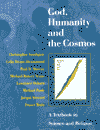Punctuated Equilibrium and Radical ContingencyDarwin supposed that variation would involve very small changes that might be difficult to detect and would initially appear to have little significance for natural selection. The idea that evolution proceeds by such small steps and never makes jumps, is a key ‘dogma’ in neo-Darwinism. It is called gradualism. There have been some challenges to this belief but the most significant have been by Eldredge and Gould, stemming from a paper in 1972. They stated that there was strong evidence in the fossil record for long periods of stasis, during which virtually no evolution occurred. These long periods of several million years were punctuated by relatively short periods of rapid evolution, over periods of 5,000 to 50,000 years, which is very brief in geological time. This view has more or less been integrated into neo-Darwinism. The work of Stephen Jay Gould in particular remains
important, through his resolute resistance to Dawkins’ genetic reductionism,
his insistence that evolution cannot be equated with progress, and his emphasis
on historical contingency. In his beautiful book Wonderful Life, on the fossil evidence of the Burgess Shale, a
sediment in the Canadian Rockies, Gould emphasises that it would have been
impossible, inspecting the range of organisms of 500 million years ago, to say
which would survive into later eras, yet all the vertebrates we know are
thought to be descended from a single, insignificant-seeming type of worm
called Pikaia. So running the tape of
life again would be very unlikely to give rise to creatures like ourselves. The status of Gould’s conclusions in Wonderful Life has recently been challenged by Simon Conway Morris
in his The Crucible of Creation (1998).
Email
link | Feedback | Contributed by: Dr. Christopher Southgate and Dr. Michael Robert Negus
|





